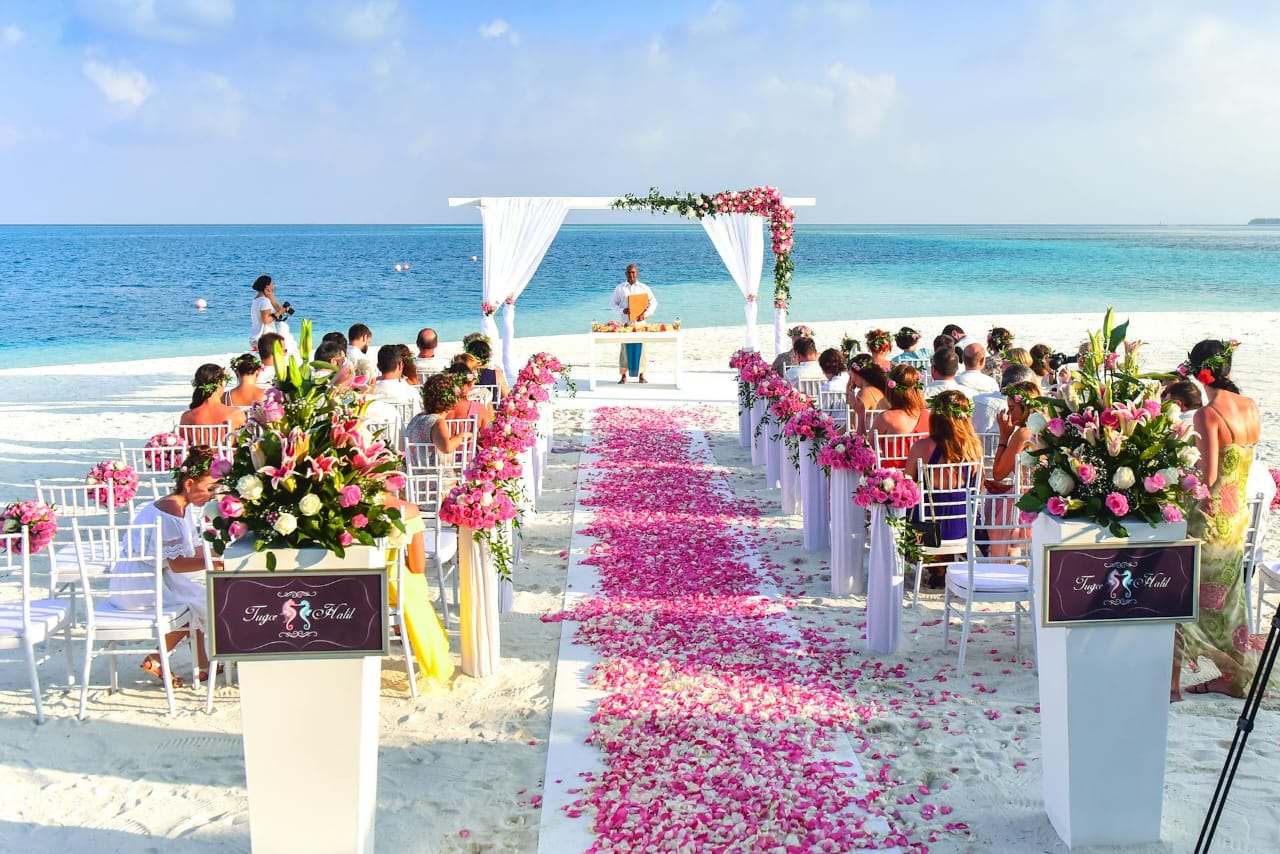Seating at a wedding ceremony is an important part of creating an organized and meaningful atmosphere. Proper seating ensures that family, close friends, and honoured guests are acknowledged and given the respect they deserve. The order of seating at a wedding follows traditional etiquette, but it can be adjusted to suit the couple’s preferences or unique family situations. Here’s a breakdown of the typical order of seating at a wedding ceremony, along with tips to help it go smoothly.
1. Start with the Immediate Family
Immediate family members, such as parents, grandparents, and siblings, are traditionally seated first. This seating order honours close family members and gives them a clear view of the ceremony.
Order of Immediate Family Seating:
- Grandparents of the Bride: Traditionally, the bride’s grandparents are seated first. They are typically escorted by an usher to the front row, starting with the grandmother, followed by the grandfather.
- Grandparents of the Groom: The groom’s grandparents are seated next, typically on the groom’s side of the aisle, and are also escorted by an usher.
- Parents of the Groom: The groom’s parents (or stepparents) are next to be seated, with the mother of the groom escorted by an usher to her seat. If the groom’s parents are divorced, they may be seated separately, with special arrangements made to accommodate each family member’s preference.
- Mother of the Bride: The mother of the bride is the last immediate family member to be seated, as this signifies that the ceremony is about to begin. She is often escorted by an usher or a close family member.
Note on Family Seating:
For same-sex weddings, the family of each partner can be seated in a similar order, starting with grandparents and then the parents. The couple can decide which family sits on each side based on their preference or family dynamics.
2. Reserved Seating for Close Family and VIP Guests
Once the immediate family is seated, the next rows can be reserved for close family members and special guests, such as siblings, aunts, uncles, and close family friends who have played important roles in the couple’s lives. It’s common to reserve two to three rows behind the immediate family for these special guests.
Order of Close Family Seating:
- Siblings and Close Family Members: Siblings, often accompanied by their partners or children, are typically seated in the first few rows.
- Special Friends or VIP Guests: Close friends, mentors, or individuals who have had a meaningful impact on the couple’s relationship may also be given reserved seating in these rows.
- Additional Family Members or Extended Family: Aunts, uncles, cousins, and other extended family members can be seated directly behind close family and VIP guests, typically within the first few rows of the ceremony area.
Tip for Reserved Seating:
Use markers, such as signs, ribbons, or small reserved cards on seats, to designate areas for family and VIP guests. Ushers should be briefed in advance to help guide guests to their designated seats.
3. Seating for the Bridal Party
The bridal party may be seated before or during the ceremony, depending on the layout and preferences of the couple. Some weddings have the bridal party stand alongside the couple during the ceremony, while others seat the bridal party to the side of the ceremony area.
Options for Bridal Party Seating:
- Standing by the Couple: If the bridal party is standing, bridesmaids traditionally stand on the left side, and groomsmen on the right. This allows them to participate closely in the ceremony and adds a visual element to the setting.
- Seated in Reserved Rows: Some ceremonies arrange for the bridal party to sit in reserved seats near the front. This is especially common in religious ceremonies or smaller venues where there may be limited space for standing.
- Flower Girl and Ring Bearer Seating: After walking down the aisle, the flower girl and ring bearer may sit with their parents or guardians in the front rows or stand near the bridal party, depending on their age and the ceremony’s setup.
Tip for Bridal Party Seating:
Discuss seating preferences with the bridal party ahead of time, so they know whether they’ll be seated or standing. Also, consider the flow of the processional, so each person knows where to go once they reach the ceremony area.
4. Special Considerations for Divorced or Blended Families
Weddings can bring together family members from different backgrounds, including divorced or blended families. Seating arrangements for divorced parents or other family members who may not have close relationships should be handled thoughtfully to ensure everyone feels comfortable.
Tips for Blended Family Seating:
- Separate Rows: If the parents are divorced and there’s tension, consider seating them in separate rows. The parent closest to the couple or the one with a closer relationship often sits in the first row, while the other sits in the row behind.
- Accommodate Stepparents: Stepparents may be seated with their spouses in either the first or second row, depending on family dynamics. If the relationship is positive, both sets of parents can sit together in the front row.
- Assigned Ushers: Designate ushers who know the family dynamics to assist with seating divorced or blended families, helping avoid any awkward moments.
5. General Seating for Guests
Once the immediate family, close family members, and VIP guests are seated, the rest of the guests can be seated in a more relaxed manner. Traditionally, guests of the bride and groom are seated on separate sides, but this is increasingly flexible, and many couples now opt for open seating.
Traditional vs. Open Seating:
- Traditional Seating: For a traditional ceremony, guests of the bride sit on the left side, while guests of the groom sit on the right. This is especially common for religious ceremonies and adds a classic touch.
- Open Seating: Many modern weddings use open seating, where guests are free to choose their seats regardless of whether they’re family or friends of the bride or groom. This approach fosters a relaxed, inclusive atmosphere.
Tips for General Seating:
- First-Come, First-Served: Encourage guests to arrive at least 15-30 minutes before the ceremony starts to find seats without rushing.
- Signs to Guide Guests: Use signs to let guests know if seating is open, reserved, or has any other specific instructions. Consider having ushers stationed at the entrance to help guide guests.
6. Finalizing the Seating Procession
Once everyone is seated, the wedding ceremony can officially begin. At this point, the officiant will take their place, followed by the processional, where the bridal party, groom, and bride make their entrances.
Processional Order:
- Groom’s Entrance: The groom may enter from the side with the officiant or walk down the aisle alone or with both parents.
- Bridal Party Processional: Bridesmaids and groomsmen may walk in pairs or individually, leading up to the maid of honor and best man.
- Flower Girl and Ring Bearer: Traditionally, the flower girl and ring bearer walk down the aisle before the bride’s entrance.
- Bride’s Entrance: The bride’s entrance is the grand finale of the processional, often accompanied by her father or another close family member. This marks the official beginning of the wedding ceremony.
Make sure the wedding coordinator or designated ushers know the order of seating and the timing of each entrance to create a seamless flow.
By following this guide and considering family dynamics and personal preferences, you can create a seating arrangement that honours everyone’s role in your special day, ensuring a comfortable, respectful, and beautiful ceremony for all.



